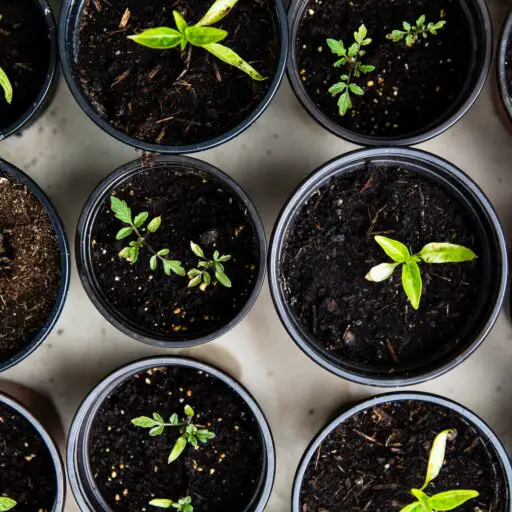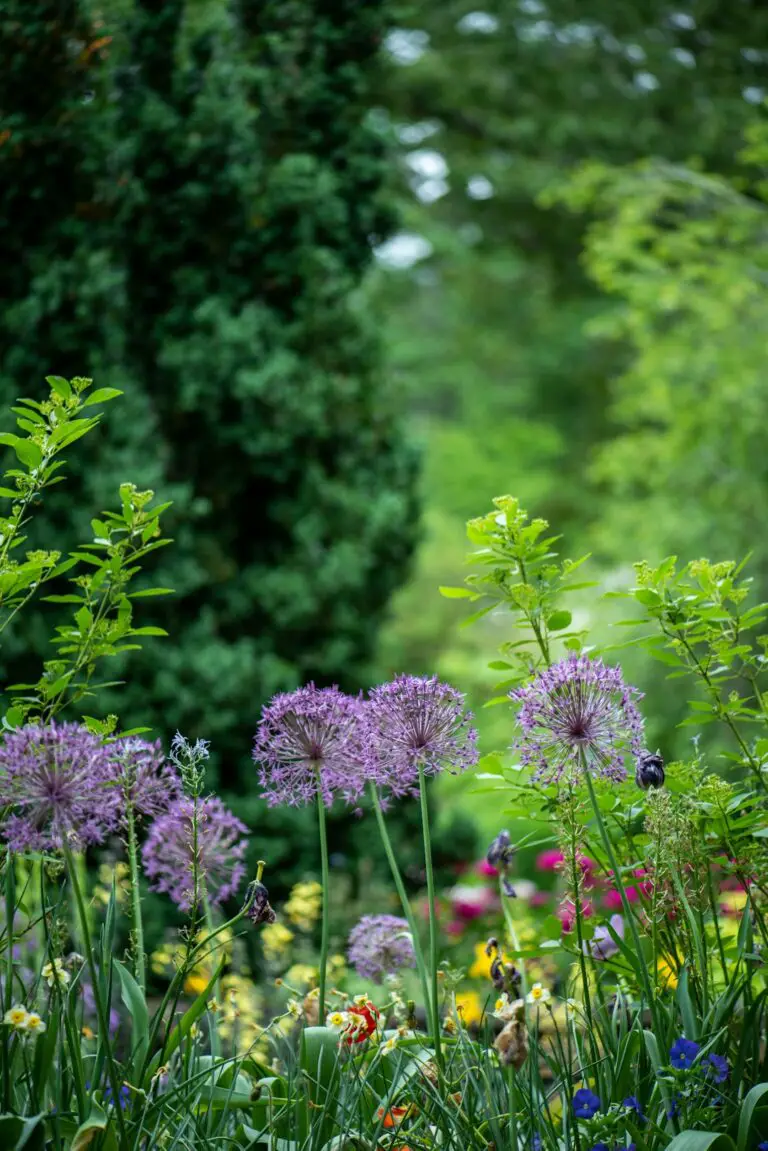Support our educational content for free when you purchase through links on our site. Learn more
Have you ever watched a small garden bloom into a vibrant community space, only to find that with every new sprout, some of the original charm fades away? 🌼 Growing communities can be like that; they bring a wealth of opportunities, friendships, and resources, but they also come with unexpected challenges that can leave seasoned gardeners scratching their heads. Did you know that nearly 70% of community gardens report conflicts over shared resources as they expand? 🤯
In this article, we’re diving deep into the 10 hidden disadvantages of community growth that can catch even the most enthusiastic gardeners off guard. From resource depletion to shifting social dynamics, we’ll explore how to navigate these challenges while keeping your community thriving. So, grab your gloves, and let’s dig into the dirt of community growth together!
Key Takeaways 🌟
- Resource Depletion: As communities grow, the demand for shared resources can lead to shortages and conflicts.
- Social Dynamics Shift: Increased membership can create cliques and reduce the close-knit feeling of the community.
- Environmental Impact: Rapid growth can strain local ecosystems and lead to pollution.
- Infrastructure Challenges: More residents often mean increased traffic, parking issues, and strained public services.
- Economic Disparities: Growth can lead to rising housing costs and wage disparities within the community.
Ready to cultivate solutions for your community garden? Check out our essential gardening tools like Garden Trowels and Compost Bins to ensure you’re well-prepared for whatever challenges come your way! 🌿
Table of Contents
- Quick Tips and Facts About Community Growth Disadvantages
- Understanding Community Growth: The Good, The Bad, and The Ugly
- Top 10 Disadvantages of Community Growth You Need to Know
- The Impact of Overpopulation on Community Resources
- Social Dynamics: How Growth Affects Community Relationships
- Environmental Concerns: The Dark Side of Expanding Communities
- Economic Implications of Rapid Community Growth
- Navigating Infrastructure Challenges in Growing Communities
- Cultural Shifts: The Effects of Community Expansion
- Strategies for Managing Growth Effectively
- Conclusion
- Recommended Links
- FAQ
- Reference Links
Quick Tips and Facts About Community Growth Disadvantages ‼ ‼ ‼
🌱 Don’t be a stranger! Community gardens thrive on participation. The more, the merrier…or is it? 🤔 Head over to our Community Garden Events page to find out!
🍅 Sharing is caring, but… sometimes it can lead to conflict. Check out our tips on Community Garden Policies to avoid any tomato tragedies!
🌻 From seed to shining seed: Growing pains are real! But with the right approach, even disadvantages can be managed. Our Gardening for Beginners section can help you blossom!
Understanding Community Growth: The Good, The Bad, and The Ugly 🌱
Ah, community growth! It’s like adding a splash of Miracle-Gro to your social garden. Suddenly, more hands are digging in, more ideas are sprouting, and the harvest of friendships is bountiful. But hold your trowels, green thumbs! Just like that prize-winning pumpkin that took over your plot, unchecked growth can have its downsides.
As seasoned community gardeners at Community Gardening™, we’ve seen it all – the good, the bad, and the downright prickly. We’re here to spill the horticultural tea on the not-so-rosy side of community expansion, so you can cultivate a thriving and harmonious green space.
Want to know what can go wrong in a community garden? We’ve got you covered: What is a disadvantage of a community garden?
Top 10 Disadvantages of Community Growth You Need to Know 🚧
Buckle up, buttercups, because we’re about to dig into the dirt on the downsides of a booming community!
- Resource Depletion: Remember that time when everyone planted zucchini, and you ended up with enough to feed the entire neighborhood? Now imagine that on a larger scale with water, tools, and even parking spaces!
- Increased Competition: A little friendly competition is healthy, but when resources are stretched thin, things can get, well, a little less friendly. Suddenly, it’s a race to snag the best compost bin or reserve that coveted sunny spot.
- Loss of Intimacy: Remember when your community garden felt like a cozy group of friends sharing gardening tips and laughter? As more people join, that close-knit feeling can fade, replaced by a more impersonal vibe.
- Communication Breakdowns: Remember that game of telephone you played as a kid? Yeah, that’s what communication can feel like in a large group. Important messages get lost in the weeds, leading to confusion and frustration.
- Decision-Making Dilemmas: What happens when you have a garden full of passionate gardeners with different visions? Decision-making can become a thorny issue, with disagreements over everything from planting choices to event planning.
- Conflict Resolution Challenges: Where there are people, there will be disagreements—it’s as inevitable as weeds in your garden. But in a larger community, resolving conflicts fairly and effectively can feel like navigating a prickly thicket.
- Burnout Among Volunteers: Enthusiasm is like fertilizer—it helps things grow! But even the most dedicated volunteers can experience burnout when faced with increased demands and responsibilities.
- Lack of Inclusivity: As communities grow, it’s crucial to ensure everyone feels welcome and included. However, rapid growth can sometimes outpace efforts to create a truly diverse and equitable space.
- Strain on Infrastructure: Imagine your garden paths overflowing with wheelbarrows and tools, or the compost bins overflowing like a bad case of blossom-end rot. Rapid growth can put a strain on shared infrastructure, leading to maintenance headaches and even safety concerns.
- Shifting Group Dynamics: Remember when everyone knew each other’s names and favorite gardening gloves? As new members join, the group dynamic inevitably shifts, which can be exciting but also challenging to navigate.
Don’t despair! While these disadvantages are real, they’re not insurmountable. With careful planning, open communication, and a commitment to inclusivity, you can cultivate a thriving community garden, no matter how big it grows.
The Impact of Overpopulation on Community Resources 💧
Picture this: it’s a sweltering summer day, and you’re eager to water your thirsty tomatoes. You reach for the hose, but it’s as dry as a popcorn fart! Why? Because everyone else in the garden had the same idea, and the water pressure has plummeted.
Overpopulation, even on a smaller scale like a community garden, can put a serious strain on resources. Suddenly, those communal tools are always checked out, the compost bins are overflowing faster than a zucchini plant in July, and good luck finding a parking spot during peak hours!
Here’s the deal:
- Water Wars: In many regions, water is a precious commodity. As communities grow, so does the demand for water, leading to potential shortages and conflicts over irrigation.
- Tool Time Troubles: Remember that feeling of dread when you realize someone walked off with your favorite trowel? Multiply that by ten when you’re sharing tools with a larger group.
- Compost Chaos: Composting is like magic, transforming kitchen scraps into garden gold. But an overabundance of green waste can lead to overflowing bins, attracting unwanted pests and creating a smelly situation.
- Space Invaders: Remember that game where you shoot pixelated aliens before they take over your spaceship? Finding space for new plots and projects in an already crowded garden can feel like that—except the stakes are higher than just a high score.
So, what’s a gardener to do? 🤔
- Water Wisely: Implement water-saving techniques like drip irrigation, rainwater harvesting, and drought-tolerant plants.
- Tool Time Organization: Create a clear system for borrowing and returning tools, and consider investing in duplicates of frequently used items.
- Compost Collaboration: Explore options for expanding your composting system, such as adding more bins or partnering with a local composting facility.
- Space Planning Savvy: Think vertically! Utilize trellises, raised beds, and vertical gardens to maximize growing space.
Remember, a little planning and a lot of communication can go a long way in ensuring everyone has access to the resources they need to thrive.
Social Dynamics: How Growth Affects Community Relationships 🤝
Remember that warm and fuzzy feeling you got when you first joined your community garden? Everyone knew your name, you swapped gardening tips like trading cards, and potlucks were a regular occurrence. Fast forward a few seasons, and the garden is bustling with new faces. While exciting, this influx of new gardeners can also change the social dynamics, sometimes in unexpected ways.
Here’s the lowdown on how growth can impact those cherished community relationships:
- From Close-Knit to Clicks: As the group expands, it’s natural for smaller subgroups to form, often based on shared interests, gardening styles, or even just proximity within the garden. While not inherently bad, these “garden cliques” can sometimes lead to feelings of exclusion or make it harder for newcomers to feel fully integrated.
- Communication Conundrums: Remember that game of telephone? Yeah, that’s what communication can feel like in a larger group. Important messages get lost in the grapevine, rumors spread faster than bindweed, and misunderstandings sprout like weeds.
- Conflict Resolution Complexities: Let’s face it, disagreements are as inevitable as aphids in a rose garden. But in a larger community, resolving conflicts fairly and effectively can feel like navigating a prickly thicket. Without clear communication channels and established conflict resolution processes, minor disagreements can escalate into full-blown garden feuds.
- Volunteer Fatigue: Enthusiasm is like fertilizer—it helps things grow! But even the most dedicated volunteers can experience burnout when faced with increased demands and responsibilities. As the community grows, it’s crucial to distribute tasks equitably and ensure everyone feels supported.
So, how do you keep the community spirit alive amidst all this growth?
- Foster Inclusivity: Create a welcoming environment for new members by organizing orientation sessions, assigning garden buddies, and promoting opportunities for interaction beyond just gardening.
- Communication is Key: Establish clear communication channels, such as regular newsletters, online forums, or even a dedicated WhatsApp group, to keep everyone informed and connected.
- Conflict Resolution Strategies: Develop a clear process for addressing conflicts that emphasizes open communication, active listening, and finding mutually agreeable solutions.
- Volunteer Appreciation: Show your volunteers some love! Organize potlucks, volunteer appreciation events, or even just a heartfelt thank-you note to acknowledge their hard work and dedication.
Remember, a thriving community garden is about more than just growing plants—it’s about cultivating strong relationships and a shared sense of purpose.
Environmental Concerns: The Dark Side of Expanding Communities 🌫️
We love a good growth spurt as much as the next gardener, but let’s be real—expanding communities can cast a shadow on the environment if we’re not careful. Think of it like this: more people often means more cars, more trash, and a bigger footprint on our planet.
Here’s the dirt on the environmental downsides of community growth:
- Increased Pollution: More people often translate to more cars on the road, spewing out those nasty greenhouse gases. Plus, increased construction and development can kick up dust and release pollutants into the air and water.
- Habitat Loss: As communities sprawl outward, they often encroach on natural habitats, displacing wildlife and disrupting ecosystems. It’s like building a housing development on top of a beehive—not exactly a recipe for harmonious co-existence.
- Resource Depletion: We’ve already talked about the strain on resources within the garden, but it’s important to remember that this issue extends far beyond the fence line. Growing communities require more water, energy, and raw materials, putting a strain on our planet’s finite resources.
- Waste Management Woes: More people inevitably generate more trash. If waste management systems aren’t equipped to handle the increased volume, it can lead to overflowing landfills, illegal dumping, and environmental contamination.
Don’t despair! We can mitigate these environmental impacts with a little green thinking:
- Sustainable Transportation: Encourage alternative modes of transportation like biking, walking, carpooling, and public transit. Consider advocating for bike lanes, pedestrian-friendly infrastructure, and improved public transportation options in your community.
- Green Building Practices: Promote the use of eco-friendly building materials, energy-efficient designs, and sustainable landscaping practices in new construction and renovations.
- Water Conservation: Implement water-saving measures in homes, businesses, and public spaces. Think low-flow toilets, drought-tolerant landscaping, and rainwater harvesting systems.
- Waste Reduction and Recycling: Encourage composting, recycling, and reducing waste at the source. Support local initiatives to improve waste management infrastructure and promote a circular economy.
Remember, even small changes can make a big difference when it comes to protecting our planet. By making conscious choices and advocating for sustainable practices, we can help ensure that our communities grow in a way that benefits both people and the environment.
Economic Implications of Rapid Community Growth 📈
Hold onto your gardening hats, folks, because we’re about to delve into the world of economics! While rapid community growth can bring a surge of new faces and exciting opportunities, it can also have a ripple effect on the local economy, both positive and negative.
Here’s the down-low on the economic implications of a booming community:
- Booming Businesses: A larger population means a larger customer base for local businesses. Restaurants are packed, shops are bustling, and contractors have more projects than they can handle. This economic stimulation can lead to job creation, increased tax revenue, and overall prosperity.
- Housing Headaches: Remember that time you tried to repot a tomato plant that had outgrown its container? Finding affordable housing in a rapidly growing community can feel a lot like that—cramped, competitive, and frustrating! As demand outpaces supply, housing prices and rents skyrocket, making it challenging for some residents to afford to stay in their own communities.
- Wage Disparities: While a growing economy can create jobs, not all jobs are created equal. Rapid growth can lead to a surge in low-wage service sector jobs, while higher-paying professional positions may lag behind. This disparity can exacerbate income inequality and create challenges for residents trying to make ends meet.
- Strain on Infrastructure: Remember those overflowing compost bins and crowded parking lots we talked about earlier? Rapid growth can put a strain on public infrastructure, such as roads, bridges, schools, and parks. If infrastructure improvements don’t keep pace with population growth, it can lead to traffic congestion, overcrowded schools, and a decline in the overall quality of life.
So, how do we cultivate economic prosperity while managing the growing pains?
- Affordable Housing Initiatives: Support policies that promote the development of affordable housing options, such as inclusionary zoning, rent control measures, and financial assistance programs for low- and moderate-income residents.
- Workforce Development: Invest in job training and education programs that equip residents with the skills needed for higher-paying jobs in growing industries.
- Infrastructure Investments: Advocate for smart infrastructure investments that prioritize public transportation, walkable neighborhoods, and sustainable solutions to accommodate growth while minimizing environmental impact.
Remember, economic growth should benefit everyone in the community, not just a select few. By addressing these challenges head-on, we can create a more equitable and prosperous future for all residents.
Navigating Infrastructure Challenges in Growing Communities 🚦
Imagine this: you’re rushing to your community garden, eager to harvest your prize-winning zucchini before the squirrels discover it. But as you approach your usual route, you’re met with a sea of brake lights. Traffic is backed up for miles, and your dreams of zucchini bread are fading faster than a wilting lettuce head.
This, my friends, is just one example of the infrastructure challenges that can arise when communities grow faster than a patch of mint.
Here’s the deal:
- Traffic Tribulations: More people often mean more cars on the road, leading to traffic congestion, longer commute times, and increased air pollution. Suddenly, that quick trip to the garden turns into an epic journey worthy of a Tolkien novel.
- Parking Pandemonium: Remember that feeling of despair when you circle the block for the tenth time, desperately searching for a parking spot? As communities grow, finding a place to park your car can feel like winning the lottery—except there’s no cash prize, just the sweet relief of not having to walk a mile with a trunk full of gardening supplies.
- Public Transportation Predicaments: While public transportation can be a lifesaver in congested areas, rapid growth can strain existing systems. Overcrowded buses, infrequent service, and limited routes can make it challenging for residents to get where they need to go without a car.
- Schoolhouse Squeeze: As families flock to growing communities, schools can become overcrowded, leading to larger class sizes, strained resources, and a decline in the quality of education.
So, how do we pave the way for smoother sailing in growing communities?
- Smart Growth Strategies: Support policies that promote smart growth principles, such as mixed-use development, walkable neighborhoods, and compact urban design. By creating communities where people can live, work, and play without relying heavily on cars, we can reduce traffic congestion and improve overall quality of life.
- Public Transportation Investments: Advocate for increased funding for public transportation, including expanding bus and rail lines, improving service frequency, and making public transit more accessible and affordable.
- Infrastructure Upgrades: Support investments in infrastructure upgrades, such as road widening projects, bridge repairs, and traffic light synchronization, to improve traffic flow and reduce congestion.
Remember, a little planning and a lot of investment can go a long way in creating communities that are both livable and sustainable.
Cultural Shifts: The Effects of Community Expansion 🌎
Remember that charming local coffee shop where everyone knew your name and your usual order? Now imagine a Starbucks on every corner, each one indistinguishable from the next. This, in a nutshell, is one potential consequence of community expansion—the homogenization of culture.
As new residents arrive, they bring their own unique traditions, values, and perspectives, which can enrich the cultural tapestry of a community. However, rapid growth can also lead to a loss of local character and a sense of placelessness.
Here’s the lowdown on how community expansion can impact local culture:
- Changing Demographics: As new residents arrive, they often bring different cultural backgrounds, languages, and traditions. This diversity can enrich the community but also lead to challenges in bridging cultural divides and fostering a sense of inclusion.
- Loss of Local Flavor: Rapid growth can lead to the displacement of long-time residents and businesses, often replaced by chain stores, generic housing developments, and a more homogenized landscape. Think of it like replacing your grandmother’s secret-recipe apple pie with a mass-produced version from the grocery store—it might look the same, but it just doesn’t taste as good.
- Shifting Values: As communities grow, the values and priorities of the residents may shift. What was once a quiet, rural community may transform into a bustling suburb with a focus on consumerism and individual achievement.
- Social Cohesion Challenges: Rapid growth can make it more challenging to build social connections and foster a sense of community. People may feel less connected to their neighbors, and social trust may decline.
So, how do we preserve the heart and soul of a community amidst growth?
- Celebrate Diversity: Embrace the richness and diversity that new residents bring, creating opportunities for cultural exchange, interfaith dialogue, and community-building events that celebrate the tapestry of cultures within the community.
- Support Local Businesses: Patronize locally owned businesses, restaurants, and cultural institutions. These establishments provide unique character and flavor to a community and often serve as gathering places for residents.
- Preserve Historical and Cultural Landmarks: Advocate for the preservation of historical buildings, cultural landmarks, and natural spaces that contribute to the unique identity of the community.
- Foster a Sense of Belonging: Create opportunities for residents, both old and new, to connect with each other, build relationships, and feel a sense of belonging in their community.
Remember, a community is more than just a collection of buildings and infrastructure—it’s the people, the stories, and the shared experiences that make it special. By valuing and nurturing these intangible qualities, we can ensure that our communities retain their unique character and charm, even as they grow and evolve.
Strategies for Managing Growth Effectively 🌱
Okay, so we’ve explored the potential downsides of community growth, and it might feel like we’re drowning in a sea of negativity. But fear not, fellow gardeners! Just like we wouldn’t let a few pesky weeds ruin our entire harvest, we’re not going to let these challenges derail our communities.
Here’s the good news: with careful planning, proactive measures, and a commitment to collaboration, we can manage growth effectively and create communities that are both thriving and sustainable.
Think of it like this: we’re not just adding more plants to the garden; we’re carefully cultivating a vibrant ecosystem where everyone can flourish.
Here are some strategies to guide our growth:
- Smart Growth Principles: Embrace smart growth principles that prioritize sustainable development, such as mixed-use zoning, walkable neighborhoods, and compact urban design. By creating communities where people can live, work, and play without relying heavily on cars, we can reduce traffic congestion, preserve open space, and foster a greater sense of community.
- Community Engagement: Encourage active citizen participation in the planning process. Host town hall meetings, create online forums, and solicit feedback from residents on proposed developments and community initiatives. When people feel heard and valued, they’re more likely to support growth that benefits the entire community.
- Affordable Housing Initiatives: Address the issue of affordable housing head-on by implementing policies that encourage the development of affordable housing options, such as inclusionary zoning, rent control measures, and financial assistance programs for low- and moderate-income residents.
- Infrastructure Investments: Prioritize investments in sustainable infrastructure, such as public transportation, bike lanes, pedestrian-friendly streetscapes, and green infrastructure projects that manage stormwater runoff and reduce the urban heat island effect.
- Environmental Protection: Implement policies that protect natural resources, reduce pollution, and promote environmental sustainability. This might include investing in renewable energy sources, promoting water conservation measures, and preserving open space and natural habitats.
- Economic Development: Foster a diverse and resilient local economy that provides opportunities for all residents. This might involve supporting small businesses, investing in workforce development programs, and attracting businesses that offer good-paying jobs.
- Social Equity: Promote social equity and inclusion by ensuring that all residents have access to quality education, healthcare, affordable housing, and opportunities for economic advancement. Create a welcoming and inclusive community where everyone feels valued and respected.
Remember, managing growth effectively is an ongoing process that requires collaboration, innovation, and a willingness to adapt to changing circumstances. By embracing these strategies and working together, we can create communities that are not only bigger but also better for everyone.
Conclusion 🌱

As we wrap up our deep dive into the disadvantages of community growth, it’s clear that while expanding communities can bring a wealth of benefits—like increased diversity, economic opportunities, and vibrant social networks—there are also significant challenges to consider. From resource depletion and social dynamics to environmental concerns and infrastructure strains, the growing pains of a community can be quite real.
However, don’t let these potential pitfalls deter you! With proactive management, open communication, and a commitment to inclusivity, communities can thrive and grow harmoniously. Remember, much like tending to a garden, it takes effort, patience, and care to cultivate a space where everyone can flourish. 🌼
So, whether you’re a seasoned gardener or just starting your community gardening journey, embrace the growth with both hands and a hearty shovel! And if you’re looking for more insights, don’t forget to check out our Community Garden Policies and Community Garden Events for tips on keeping your community thriving!
Recommended Links 🛒
-
Gardening Essentials:
- Garden Trowel: Amazon | Walmart | Fiskars Official
- Compost Bin: Amazon | Walmart | Envirocycle Official
- Raised Garden Beds: Amazon | Walmart | Greenes Fence Official
-
Books on Community Gardening:
FAQ ❓

What is an advantage when a community grows? 🤔
Growing communities can lead to increased social interaction and support. As more people join, there are greater opportunities for collaboration, shared resources, and a sense of belonging. This can foster friendships and create a stronger sense of community identity. Moreover, a larger population can attract local businesses, improving the economic landscape and providing more services and amenities to residents.
What are the disadvantages of living in a community? 🏡
Living in a community can lead to shared resources, which may become strained as the population grows. This can result in conflicts over shared spaces and facilities. Additionally, increased population density can lead to noise, reduced privacy, and potential disagreements among neighbors. The sense of anonymity can also increase, making it harder for individuals to connect with one another.
How did specialization affect Neolithic people? 🌾
Specialization allowed Neolithic people to become more efficient and productive. As communities transitioned from a nomadic lifestyle to settled agriculture, individuals began to focus on specific tasks such as farming, tool-making, and pottery. This division of labor led to advancements in technology, improved food production, and the establishment of trade networks, ultimately contributing to the growth of more complex societies.
What was systematic agriculture Quizlet? 🌱
Systematic agriculture refers to the organized and planned approach to farming and food production. It includes practices such as crop rotation, selective breeding, and the domestication of animals. This method contrasts with earlier foraging practices and allowed for more reliable food sources, supporting larger populations and the development of permanent settlements.
How can communities ensure inclusivity during growth? 🤝
Communities can promote inclusivity by actively engaging residents in decision-making processes and creating opportunities for interaction. This can include hosting events, workshops, and meetings that encourage participation from all community members. Additionally, providing resources and support for marginalized groups can help create a welcoming environment where everyone feels valued and included.
What are some effective strategies for conflict resolution in growing communities? ⚖️
Effective strategies for conflict resolution include establishing clear communication channels, promoting active listening, and creating a structured process for addressing disputes. Encouraging open dialogue and fostering an environment of respect can help prevent misunderstandings. It may also be beneficial to involve neutral parties or mediators to facilitate discussions and find mutually agreeable solutions.
Reference Links 🔗
- Growing Together: Benefits of Community Growing
- Renovated: Your Guide to Communal Living
- Brainly: What are the advantages and disadvantages when a community grows?
- Scottish Government: Benefits of Community Growing
- National Gardening Association: Community Gardens
Remember, whether you’re digging into community gardening or just exploring the benefits and challenges of community growth, staying informed and engaged is the key to cultivating a vibrant and thriving space for all! 🌼


